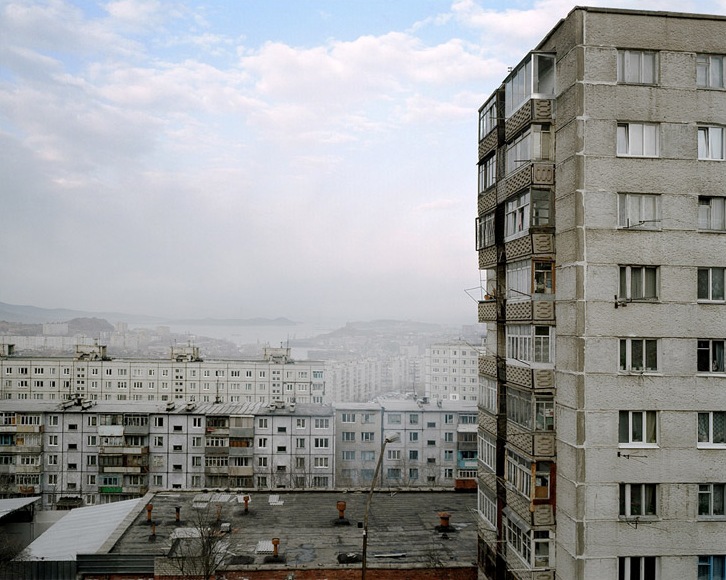Publisher: EXIT
There are places that are associated with winter, snow and the endless night, but still hold a lot of people living through it. The city Murmansk in Russia is situated well beyond the Polar circle. With its population of approx. 300,000, it is the last destination of Golfstream, which provides for all-year-round port operations. Murmansk is an important navy base, too. So what does it feel like, withstanding 40 days without any sun? Alexander Gronsky explores lives of people that live in an important strategic point; who, no doubts about that, have the internet and electricity. But with the too-long winter they are under constant siege, locked into their city, with their electrical light marking the perimeter of defense.
Many of Alexander Gronsky’s projects study the notion of the border. E.g., in his series The Edge, it was the line between the city and non-city, in the series Less than One, it was the fading distinction between the “inhabited” and the “wild.” The border for Gronsky is a site for the transformation and mutual influence of two systems that are aesthetically and morally alien to each other. The clash of these systems gives life to chaos, the aesthetic null. And according to Gronsky, it is this absolute zero where beauty is born.
Gronsky’s images are sometimes dubbed as “romantic” or “sad” But more correct is the term “detached”: he studies humans’ existence as an anthropologist. This detachment gives the air of coolness about the pictures filled with the sparkling electricity and just a little warmness incased in the snowy glow.
Gronsky used to be a documentary photographer. As such, he has had a successful career in the naughties, and was commissioned a lot by Russian and international magazines. In those years and thanks to those commissions Gronsky has traveled throughout Russia, and it is in these journeys that he has started to develop his distinctive style and vision. Later on, Gronsky has moved to artistic photography (and has enjoyed a growing recognition ever after, winning several important international rewards and participating in many festivals), but that did not change his methods nor vision. Technically, his photography remains documentary. Same is true for many other contemporary photographers whose goal is to deliver a message, not news. Steven Shore, Joel Meyerowitz, Nadav Kander, Peter Bialobrezki, Paul Graham can be named among the others. Yet in his exploration of the chaotic and mundane in search for redefining the beautiful Gronsky has achieved a very distinctive voice. He says that the protagonist of his pictures is the person looking at them. To embrace this statement, one has to look into the heart of the night and the cold, and start a very personal dialog with them.

